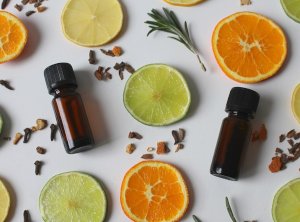 Essential oils have many useful properties and are widely used for cosmetic purposes, both in pure form and as ingredients in various skin and hair care products. Unfortunately, sometimes their quality leaves much to be desired. Today we will tell you how to check the quality and naturalness of essential oils in order to make sure that you choose the best product that won’t cause any irritation or other side effects.
Essential oils have many useful properties and are widely used for cosmetic purposes, both in pure form and as ingredients in various skin and hair care products. Unfortunately, sometimes their quality leaves much to be desired. Today we will tell you how to check the quality and naturalness of essential oils in order to make sure that you choose the best product that won’t cause any irritation or other side effects.
An essential oil is a concentrated hydrophobic liquid containing volatile chemical compounds of plants; they are extracted from various parts of plants by steam distillation, cold pressing, or solvent extraction. Depending on the purpose of their use, essential oils can be additionally purified, dissolved in alcohol or carrier oils, or mixed with various active ingredients.
If you want to buy essential oils for cosmetic purposes, you should opt for those that are derived from natural raw materials, have a high degree of purification, and are not diluted with alcohol or carrier oil to increase their volume. It is such oils that are considered to be of high quality, so if you want to check an essential oil for quality, you need to make sure that it meeds these criteria.
Greasy Stain Test
Since essential oils are highly volatile, they begin to evaporate at room temperature, leaving no greasy stains on paper. This property of essential oils can be used to check their quality: you need to drip a little oil on a sheet of paper and leave it for some time; if the oil is pure and undiluted, it won’t leave a greasy stain on the paper after evaporating. However, citrus essential oils are an exception because they may leave a yellowish stain. Heavy essential oils, such as sandalwood, vetiver or patchouli, may also leave stains.
Aroma Test
Volatile compounds contained in essential oils don’t evaporate simultaneously; because of this, the aroma of each oil changes over time after you’ve applied it to your skin. If you have a good sense of smell, you can use this feature of essential oils to check their naturalness. The aroma of natural essential oil will gradually change and “unfold”, but if you’re dealing with fake essential oil, its aroma will simply fade away over time, losing its intensity.
By the way, the duration of the fragrance also matters. Citrus essential oils are composed of the most volatile aromatic compounds, so they evaporate very quickly, leaving no smell. Conifer essential oils, on the contrary, take much longer to evaporate, so the smell of, for example, of cypress, pine, juniper, cedarwood or fir oil will linger for hours and hours.
Label Check
A high-quality essential oil will always have an informative label containing the Latin botanical name of the source plant, the parts of the plant that were used to obtain the oil (for example, bark, berries, flowers, leaves, peel, roots, seeds, wood, etc.), and the extraction method (steam distillation, cold pressing or solvent extraction). Besides, the label of a high-quality essential oil should say that this is 100% pure essential oil and nothing else.
As a result, when buying essential oils, you should carefully peruse the labels on the bottles. Look for the botanical name of the source plant, phrases such as “essential oil”, “100% essential oil” or “pure essential oil” and information about the method of production. It’s also great if the manufacturer indicates the country of origin of the raw materials because sometimes essential oils are produced in one country and bottled in another.
Bottle Check
Essential oils quickly lose their properties under the influence of direct sunlight and evaporate from bottles that aren’t closed tightly enough. Therefore, high-quality oils always come in tightly closed amber glass bottles with a dropper. By the way, essential oils typically come in small bottles, varying from 1 ml to 10 ml (or 25 ml, depending on the type of oil), since it is pointless to sell essential oils in larger bottles. The more expensive the oil, the smaller the bottle in order to make the product more affordable for customers.
Price Check
Essential oils can’t be cheap because, regardless of the extraction method, a considerable amount of raw material is needed to produce a small amount of finished product. Naturally, the more expensive the raw material, the more expensive the essential oil obtained from it, so checking the price when buying an essential oil is an important step.
However, a too low price isn’t the only indicator that the oil may be fake. A too high price should be alarming as well, because sometimes brands hike up the price just to make more money, and not because of ultra-rare raw materials or exceptional quality of their products. To be sure you’re making the right choice, compare the prices offered by several manufacturers as well as the same manufacturer’s prices for the entire collection of essential oils: oils extracted from common and cheap raw materials cannot cost as much as oils obtained from rare plants.
Finally, it should be noted that essential oils can be obtained only from certain plants because not all plants contain volatile compounds that make up essential oils. For example, if a manufacturer sells essential oils allegedly obtained from linden, lilac, lily-of-the-valley, cherry, strawberry, guava, cucumber or fig, these are fakes made with artificial fragrances or, in the best case scenario, herbal distillates.
